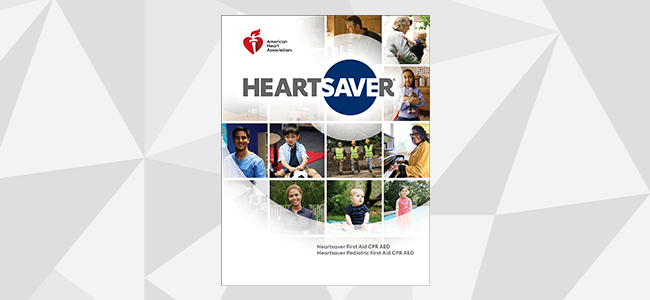Heartsaver® Pediatric First Aid CPR AED
The American Heart Association’s Heartsaver® Pediatric First Aid CPR AED course teaches critical lifesaving skills to respond to emergencies involving children and infants. Ideal for childcare providers, teachers, parents, and others who work with and care for children, this course includes pediatric first aid, child and infant CPR, and how to use an AED.
Students participate in hands-on practice and realistic scenarios to build confidence and readiness for emergencies in schools, daycare centers, homes, and community settings. Flexible training formats—classroom, onsite, self-guided and online (blended)*—make it easier to fit learning into busy schedules.
The course reflects the latest science and education from the American Heart Association 2025 Guidelines for Cardiopulmonary Resuscitation and Emergency Cardiovascular Care, ensuring instruction is trusted and up to date. Upon successful completion, students earn a course completion card valid for two years. The course is designed to meet workplace safety and regulatory requirements and helps prepare people to respond to emergencies in their communities.
*Training options may vary by Training Center.

Supported Languages
International English
Formats Available
- Instructor-led training (ILT)
- Blended learning
- eBook
Additional languages are currently in development and will launch under the 2025 Guidelines.
Until then, please continue using the 2020 Guidelines versions for these languages.
- Demonstrate how to assess the scene in the event of an emergency involving a child or an infant
- Describe how CPR improves survival
- Explain the concepts of the Chain of Survival
- Recognize when a child or an infant needs CPR
- Perform CPR on a child, an infant, and an adult
- Describe how to perform CPR with help from others
- Demonstrate giving effective breaths by using mouth-to-mouth or a mask for all age groups
- Describe how to use an AED on a child and an infant
- Demonstrate using an AED on an adult
- Describe when and how to help a choking child, infant, and adult
- Discuss how to help someone experiencing an opioid-associated emergency
- Recognize the techniques that help prevent pediatric drowning emergencies
- Discuss initial actions to take when helping a child or person who has drowned
- Discuss how universal precautions, PPE, and handwashing can protect against germs and disease
- List the priorities, roles, and responsibilities of first aid responders
- Describe the key steps in pediatric first aid
- Describe the steps to remove protective gloves
- Demonstrate the steps to respond to a pediatric first aid emergency
- Describe the assessment and first aid actions for the following life-threatening conditions: difficulty breathing, choking, heat-related injuries (dehydration), severe bleeding, pediatric shock, and diabetes and low blood sugar
- Describe how to use an epinephrine autoinjector
- Demonstrate how to control bleeding and apply direct pressure and a bandage
- Recognize elements of common pediatric illnesses and injuries
- Recognize the legal questions that apply to first aid rescuers